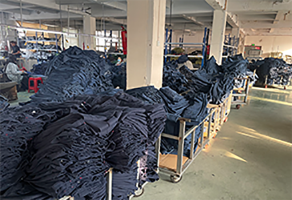- Afrikaans
- Albanian
- Arabic
- Armenian
- Basque
- Belarusian
- Bengali
- Bulgarian
- Croatian
- Czech
- Danish
- Dutch
- English
- Esperanto
- Finnish
- French
- German
- Greek
- Hebrew
- Hindi
- Indonesian
- irish
- Italian
- Japanese
- Javanese
- kazakh
- Rwandese
- Korean
- Kyrgyz
- Latin
- Latvian
- Luxembourgish
- Malay
- Myanmar
- Nepali
- Persian
- Polish
- Portuguese
- Romanian
- Russian
- Serbian
- Slovak
- Spanish
- Swedish
- Tagalog
- Tajik
- Turkish
- Ukrainian
- Uzbek
- Vietnamese
Sep . 11, 2024 14:59 Back to list
Premium Hot Work Gloves for Optimal Protection and Comfort
The Importance of Hot Work Gloves in Safety and Protection
In various industrial settings, workers face numerous hazards that can cause serious injuries, especially when involved in hot work conditions. Hot work refers to activities that generate sparks, heat, or flames, such as welding, cutting, grinding, and brazing. Given the risks associated with these processes, the use of appropriate personal protective equipment (PPE) is crucial. One essential piece of PPE is hot work gloves. These specialized gloves provide not only thermal protection but also enhance grip and dexterity, making them indispensable for workers engaged in such tasks.
Hot work gloves are designed to withstand high temperatures and protect the hands from burns, abrasions, and cuts. They are typically made from materials such as leather, aluminized fabric, or specialized polymers that can endure extreme conditions. The outer layer of these gloves is often reinforced to resist sparks and molten metal, which are common byproducts of hot work activities. Additionally, many hot work gloves feature insulated linings that keep the hands cool while providing comfort and flexibility, enabling workers to perform their tasks effectively without compromising safety.
One of the primary reasons for using hot work gloves is the prevention of thermal injuries. Direct contact with hot surfaces, molten metal, or radiant heat can result in painful burns and long recovery times. In severe cases, burns can lead to permanent damage, requiring extensive medical treatment or even resulting in disability. By wearing hot work gloves, workers can significantly reduce the risk of these injuries, allowing them to focus on their tasks without the fear of injury.
hot work gloves

Moreover, hot work gloves also enhance grip, which is essential for precision tasks like welding or handling hot materials. A secure grip is vital in any industrial environment, but it becomes even more critical when dealing with hot items that need to be positioned accurately. Gloves designed specifically for hot work often feature textured surfaces or additional grip-enhancing features, ensuring that workers can maintain control over their tools and materials, thus enhancing overall safety and productivity.
When selecting hot work gloves, it's important to consider several factors, including the specific risks associated with the job, the type of materials being handled, and the level of dexterity required. Not all hot work gloves are created equal; different tasks may necessitate different types of gloves. For instance, a welder may require gloves that offer higher thermal protection and dexterity, while someone handling hot metal might prioritize cut resistance and insulation. Employers should assess the work environment and choose gloves that meet the necessary safety standards and regulations.
Training employees on the proper use and maintenance of hot work gloves is equally important. Workers should understand how to select the right gloves for their specific tasks and be educated on the limitations of the gloves they are using. Regular inspections should also be conducted to ensure that gloves are undamaged and still provide adequate protection.
In conclusion, hot work gloves are critical for safeguarding workers in high-heat environments. Their ability to prevent burns, enhance grip, and provide necessary dexterity makes them a vital component of any safety protocol in hot work applications. By prioritizing the right PPE and educating workers on safety practices, companies can significantly reduce workplace injuries and create a safer working environment.
-
Work Reflective Vest: A Silent Guardian of Security
NewsJul.10,2025
-
Vest Reflective Safety: A Safety Lighthouse in Low Light and High Traffic Environments
NewsJul.10,2025
-
Soft Cotton Polo Shirts: A Fashionable and Practical Choice for Multiple Scenarios
NewsJul.10,2025
-
Soft Cotton Polo Shirts: A Fashionable and Practical Choice for Multiple Fields
NewsJul.10,2025
-
Reflective Vest: The Light of Industry and Outdoor Safety Protection
NewsJul.10,2025
-
Polo Shirt: A versatile and fashionable item that can be worn in one outfit
NewsJul.10,2025




